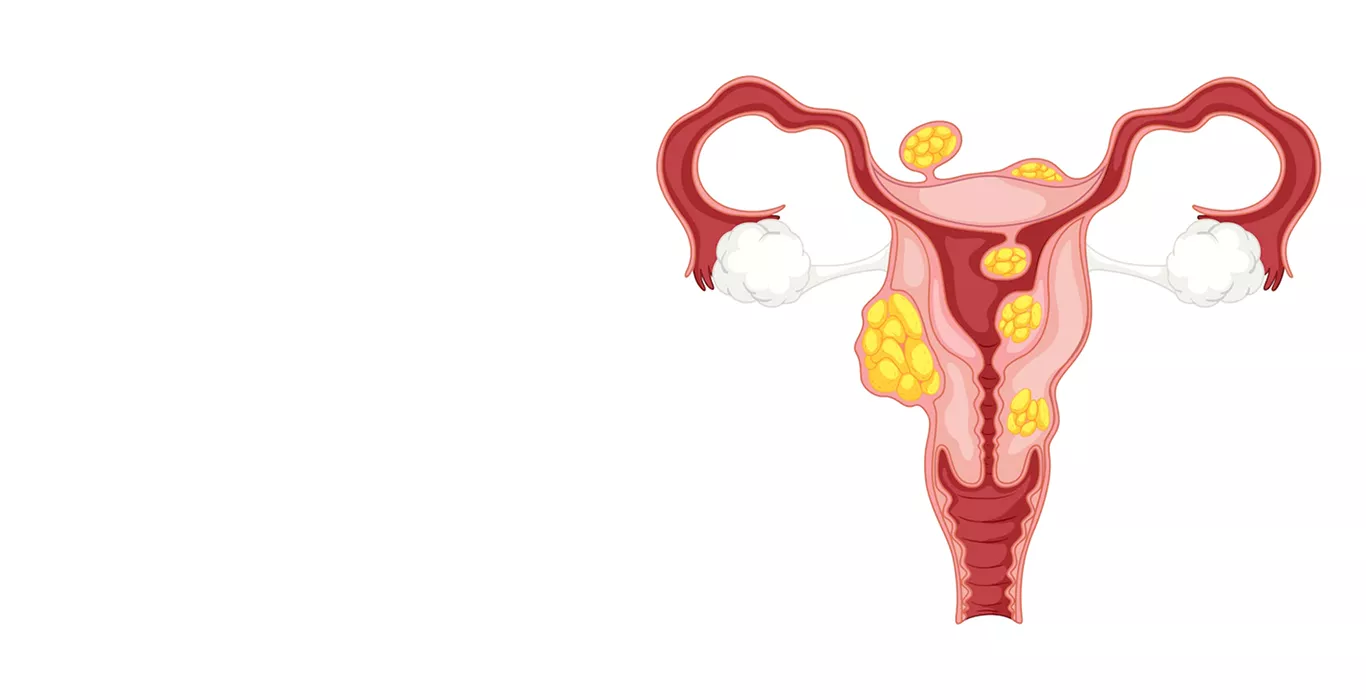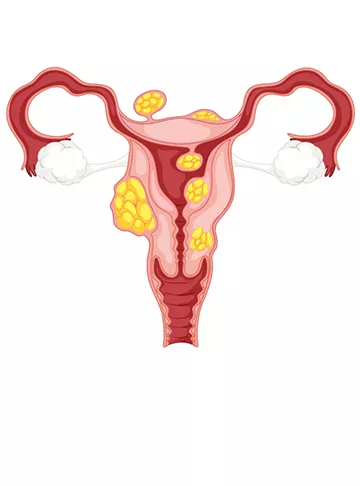x
Disclosure
The information provided here serves as a general guide and does not constitute medical advice. We strongly advise consulting a certified fertility expert for professional assessment and personalized treatment recommendations.
Uterine fibroids are abnormal mass thats made of muscle and tissue that grows in or on the wall of the uterus . Uterine fibroids may be symptomless or may produces symptoms including heavy periods, irregular periods or painful periods. Fibroids may be of different types depending on the location. Treatment depends on the size, location, and symptoms of uterine fibroids.
What are Uterine Fibroids?
Uterine fibroids are non-cancerous growths made up of muscle and tissue that develop in the uterine. They are quite common in women and can vary in size. Some women with uterine fibroids do not experience any symptoms and remain unaware of their presence. However, for others, fibroids can cause symptoms, including heavy menstrual bleeding, pelvic pain, or pressure.
What are the Types of Fibroids?
Fibroids are of different types depending on their location in the uterine wall. Different types of fibroids are:
- Intramural Fibroids : These are the most common fibroids that form in the uterine muscular wall.
- Submucosal Fibroids : These fibroids develop in the inner lining of the uterus.
- Subserosal Fibroids : These fibroids form under the lining of the outer surface of the uterus and may enlarge.
- Pedunculated Fibroids : Pedunculated fibroids are rare. They are attached to the uterine wall by a stalk, resembling mushrooms.
What are the Signs and Symptoms of Uterine Fibroid?
Some women do not experience any signs and symptoms of uterine fibroids, as they are small in size, non-cancerous, and require no treatment. They do not experience any symptoms of uterine fibroids until they become significant. Large fibroids may cause some symptoms. Common symptoms of uterine fibroids are:
- Excessive menstrual bleeding. Women may also experience frequent periods due to large fibroids.
- Pain in the lower abdomen is another symptom of fibroids. Large fibroids may cause constant pain in women's abdomen.
- Bloating and fullness in the abdomen may occur due to large fibroid.
- Women also experience frequent urination as the fibroid may put pressure on the bladder. Women feel that the bladder is not emptied properly when they pass urine.
- Some women also experience pain in the lower back due to the presence of fibroids in the uterus.
- Constipation may occur if large fibroids have pressure effects. A woman may also not feel hungry due to bloating.
- Some women also have trouble in passing urine. They have to wait a long time in the washroom to pass urine.
- Distention of the abdomen.
- Due to excessive loss of blood during their periods, women may become anaemic and experience pain in the legs due to weakness.
What are the Causes of Uterine Fibroids?
The real cause of uterine fibroids is not known. It is believed that the hormones estrogen and progesterone are responsible. Most fibroids occur during the reproductive age of a woman. Fibroids may occur due to high levels of estrogen and progesterone.
How Can I Manage Uterine Fibroids?
Small fibroids need no treatment until you experience any symptoms. Treatment varies depending on the location, size, and number of the fibroids. It also depends on the uterine fibroid symptoms experienced by a woman. Some women do not face any issues with uterine fibroids. You can only monitor fibroids using ultrasounds and pelvic exams after every six months.
If you are experiencing symptoms due to uterine fibroids, such as excessive bleeding or pain, then you must consult with a doctor. Excessive bleeding can also cause anaemia and weakness. The treatment plan for uterine fibroids will depend on your age, severity of the symptoms, size, and location of the uterine fibroid.
Uterine fibroids may occur in women of reproductive age. Some women do not experience any symptoms of uterine fibroids due to the small size of the fibroids. But, if the size of the fibroid is big and you experience heavy bleeding, pain, weakness, and heaviness of the abdomen, you must consult with a doctor for the proper treatment.
Frequently Asked Questions (FAQs)
Are there any risk factors for uterine fibroids?
Yes, there are some risk factors associated with uterine fibroids which make you susceptible to developing them. Risk factors include obesity, late menopause, early onset of periods, and a family history of fibroids.
Can I experience any complications due to uterine fibroids?
Generally, fibroids do not cause complications, but some women may experience complications such as unbearable pain, swelling in the pelvic area, infertility, heavy bleeding and severe anaemia.
What diagnostic tests are available for uterine fibroids?
Uterine fibroids can be diagnosed during a pelvic examination by your healthcare practitioner. Tests done to confirm fibroids include USG (ultrasonography), MRI (Magnetic resonance imaging), CT scan (Computed tomography), and Hysteroscopy.
What will happen if I do not treat fibroids on time?
Treatment is not required if you do not experience symptoms. If you experience symptoms, only then your healthcare provider can decide the best treatment plan depending on the size, location, and symptoms due to uterine fibroids.
Pregnancy Calculator Tools for Confident and Stress-Free Pregnancy Planning
Get quick understanding of your fertility cycle and accordingly make a schedule to track it
Get a free consultation!

















